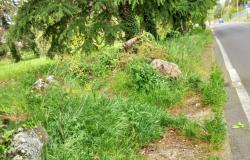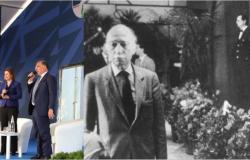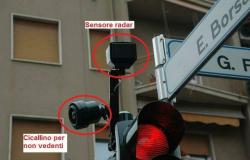The Royal Palace of Quisisana once again opens its windows onto the historical and landscape scenery of the Gulf of Naples, reopens its rooms to visitors and broadens the horizons of Italian culture. Maria Rispoli, director of the Libero D’Orsi Archaeological Museum of Stabia, exclusively reveals the unpublished news to us.
The archaeological museum of Stabia “Libero D’Orsi” together with the surrounding area is the responsibility of the archaeological park of Pompeii and is located, with an adjoining historical garden, in the “Reggia di Quisisana”, a royal palace of the Bourbon age which is located in Castellammare di Stabia, a city that is only a few kilometers from Pompeii and to which it is historically close also from a cultural point of view. Maria Rispoli, director of the Museum, illustrates the news of the reopening.
Why is the reopening of the Stabia museum so important in the context of Campanian and southern archaeology?
The eruption of Vesuvius in 79 AD. C buried Stabiae together with Pompepi and Herculaneum, but unlike the latter two cities, Stabiae it was reborn a few years after the destruction. Therefore the history of this ancient site allows us to study the geopolitical and geophysical dynamics, in the aftermath of the eruption of Vesuvius, within the territory of southern Campania; and allows us to understand the transformations that have brought the territory and its community into the present.
- Maria Rispoli, Director of the Archaeological Museum of Stabia Libero D’Orsi (Photo: Archaeological Museum of Stabia Libero D’Orsi)
A territory that needed a safe viaticum towards the sea…
Yes, indeed Stabiae it was the only one to enjoy an outlet to the sea. The city of Nocera, after the destruction of Pompeii, had lost its connection to the coast, while the Sorrento peninsula had lost its land route. Stabiae was also home to maritime military outposts of the Misenate fleet, and continued to be so even after the same eruption.
A very interesting scenario, but how to visualize it?
All this is told to the visitor with the help of a large multimedia model in the first room, which illustrates the changes in the territory over a long period of time – between Herculaneum, Vesuvius, Pompeii up to Sorrento on the Neapolitan side and Nocera and the Lattari Mountains on the Salerno one.
From the archaic world to 3D technology, a “beautiful journey”!
Well, I would say that throughout the museum itinerary the multimedia devices aim to improve cultural accessibility, to assist the visitor by allowing him to have an experience, and above all to carry out his visit independently. A further multimedia installation is then dedicated to the territory, that included in the municipalities of Gragnano, Casola, Santa Maria La Carità, Sant’Antonio Abate, which in Roman times represented the ager of Stabiae, i.e. its agricultural territory, occupied by many 50 rustic villas, discovered during investigations conducted in the Bourbon age.
And then where did these villas disappear?
Stabia, together with Pompeii and Herculaneum, was excavated and discovered, starting from 1738, by the Bourbons; but it was precisely the latter who reburied it after having investigated it and after having carried out many detachments of frescoes, now preserved at the MANN (National Archaeological Museum of Naples). In the fifties of the last century the ancient Stabiaetogether with some of those villas, was rediscovered by the principal Libero D’Orsi, to whom the museum is dedicated.
An exemplary figure that of Libero D’Orsi…
Yes, because the Stabia principal was above all responsible for the rediscovery of the maritime villas, located on the Varano plateau in Castellammare di Stabia: Villa San Marco, Villa Arianna and Secondo Complesso, which can be visited today, and Villa del Pastore. D’Orsi found the decorative items and furnishings coming from these villas and the finds are preserved and exhibited in the Stabia Museum.
What do these finds tell us?
These finds are evidence of a refined and cultured “culture of living in a villa” which is found along the coasts from the gulf of Misena to that of Sorrento. But, thanks to the Plinian eruption, here in Stabia the finds and especially the paintings retain, as in Pompeii and Herculaneum, the beauty of the time in which they were produced. The artistic quality is remarkable and many times surpasses that attested in Pompeii. StabiaeIn fact, it was frequented by the Roman elites who also had their own residences and funds here.
Residences with a wonderful sea view…
Yes, and in fact the renewed museum displays evoke the large rooms overlooking Vesuvius and the Stabian gulf, which still represent scenic backdrops projected onto the sea today. A large section of the museum, then, is dedicated to the landscape seen as crucial for the construction of the relationship between nature and the built environment.
However, a landscape that has undergone profound transformations over the millennia…
For this reason we had the idea of faithfully reconstructing, on the back of a room of the renovated D’Orsi museum, the landscape as it was enjoyable in the pre-79 AD age, that is, stripping it of all contemporary constructions and re-proposing it in a dynamic projection that changes throughout the 24 hours of the day.
You are projected back in time, but where?
The projection becomes the perspective backdrop to the furnishings found in the peristyles and gardens of the villas of Varano. Overlooking them were the rooms dedicated to living and daytime rest, to leisure and reading, to conviviality and hospitality which perpetually kept the gaze projected onto the panorama: Ischia and Cape Miseno, Capri and the Sorrento peninsula, but also the high and green mountains of which Simmaco praises the quality and healthiness of the milk produced by the herds that grazed here.
Fascinating but complex narrative. How to make it accessible to everyone?
We address the visitor with different languages to reach a heterogeneous audience, with a privileged focus on young people. We try to support him in his visit to the museum, which first of all wants to be an experience: now we inform him, other times we educate him, other times we suggest to him so that he too can put his creativity into play. Multimedia devices do not replace museum narration but assist the story itself.
A peculiarity of the renovated museum?
At the same time as the new museum visit itinerary, the new layout of the archaeological deposits was created, in order to make them visitable and open to the public. They were conceived and designed not only as places dedicated to the conservation of an archaeological heritage unknown to non-experts, but also as spaces dedicated to knowledge and sharing, open to visitors, staff and the most diverse professions for the study and for the work.
No more “dust” in the warehouses, but cognitive activities…
Without any doubt it can be stated that the knowledge that comes from visiting a deposit is not so much linked to the discovery of individual artefacts, but to the cognitive enrichment that comes from having an experience. The depot, therefore, also becomes a place of training because the skills that the visitor brings into play become preparatory to practical knowledge. So much so that it is no longer the finds that are shown to the public but the activities, which are embodied in the repertoire of conservation techniques and strategies, tools and knowledge that emerge thanks to the research, study and conservation activities that take place lead over time.
Would you tell us your common thread with the museum?
Two rooms of the museum are entirely dedicated to the paintings that decorated the ceiling and walls of the large portico of the upper peristyle of Villa San Marco. Among these, the so-called “Planisphere of the Seasons” stands out, a celestial sphere in which meridians and parallels are rotated by ethereal figures of personifications of the Seasons, aided by cupids holding objects representing the symbols of each season. It is a singular find, a unicum in Roman painting, an iconography where the scientific story is associated with the poetic one, where art becomes a means of knowledge.
From planets to local communities…
This is exactly how it is, in fact the Pompeii Archaeological Park has published a notice aimed at social promotion associations in the Third Sector for the implementation of proposals in the areas of: didactics, education, events and promotion, networks and connections. The objective is to involve the community in the valorisation and promotion of the cultural center at the Reggia di Quisisana. Together with the associations, thematic tours will be organized in the museum, theatrical visits, thematic evening visits, musical events, workshop activities, creation of digital and promotional products through the use of social media and digital and web platforms.
Any previews of upcoming museum events?
Starting from the third week of April and until the month of July, educational visits and laboratory activities will be organized in the archaeological deposits. The visits will be conducted by archaeological officials and restorers, who will show the public the work that takes place behind the scenes of a museum: the long process that affects an artefact, from its discovery, through the archaeological excavation up to its museum display: in between place the conservation, restoration, study and cataloging activities. Here too, like the museum, we have used educational expedients to make the contents accessible.







